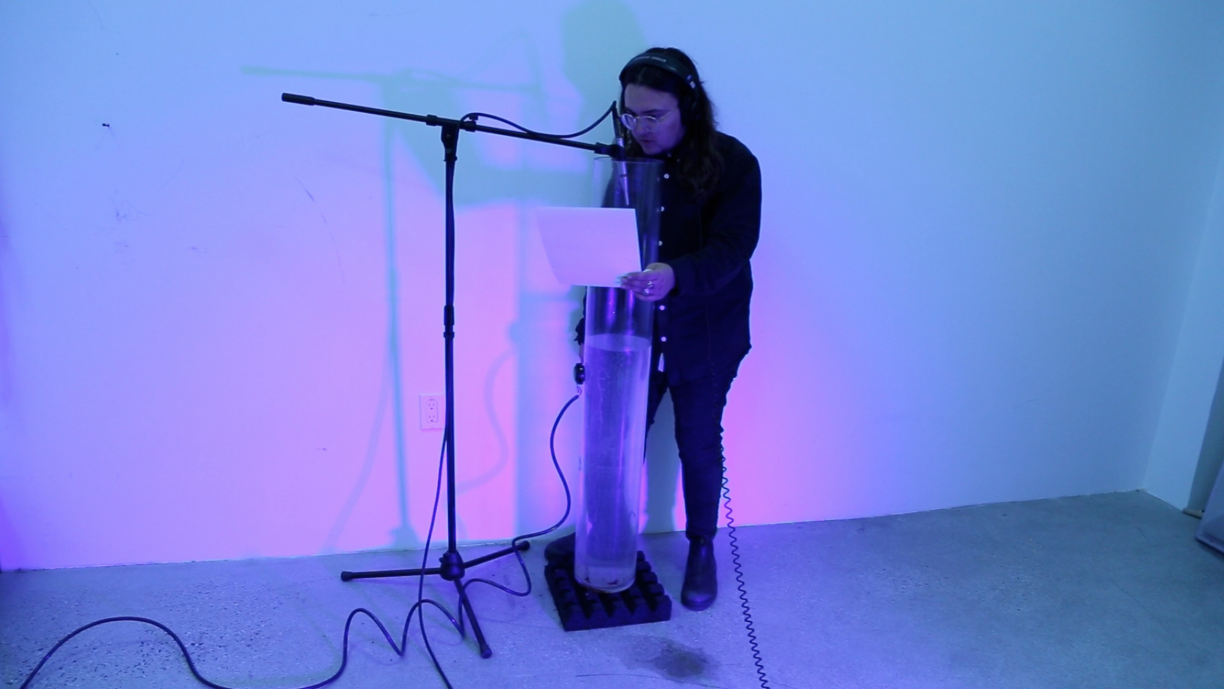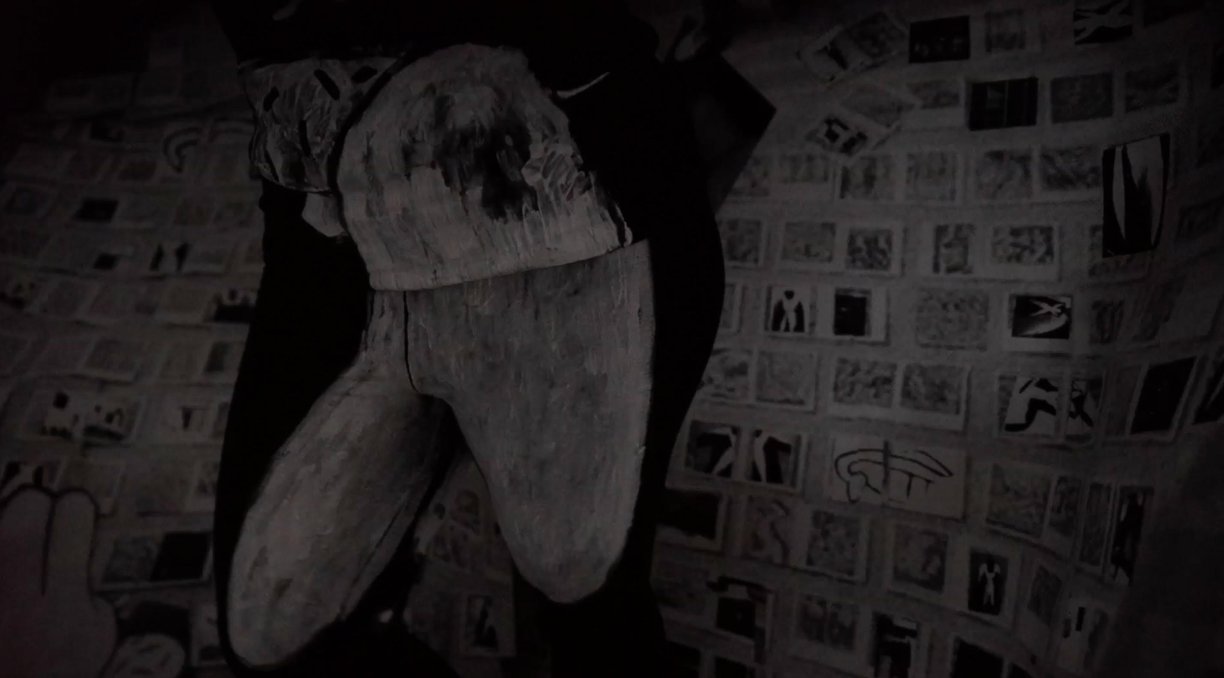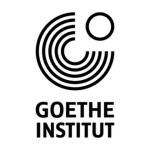Wednesday, September 19th, ISSUE and Brooklyn-based music institution RVNG Intl. present Phantom Kino Ballett, an audiovisual drama by renowned German producer Lena Willikens and multidisciplinary artist Sarah Szczesny. The evening also features artist, composer, and 2012 ISSUE Artist-In-Residence Jules Gimbrone presenting an in-process showing of a recording and performance project called "Invisible Objects." Both projects demonstrate the artist’s uniquely multiplicitous interpretations of performative objects, materials, recordings, surfaces, and mediums.
Phantom Kino Ballett combines experimental video, interview extracts, and spoken word with visual art, painted costumes, stroboscopic light, smoke machines, and sculptural interpretations of the performance area. The result is an expanded-cinema performance and hallucinatory multimedia collage that aptly evokes the project’s namesake: processual, ongoing, constantly morphing, and existing at the intersection of both Wilikens’ and Sczcesny’s myriad art practices. More mysteriously, Phantom Kino Ballett is described as “fragmented theatre, Holly Woodlawn´s nervous breakdowns, Taros arpeggiated anime, Mario Montez´ mobilee, Maria Callas´ chiffre, and Anna Oppermann´s eyelashes.” The current version, which has been developed in Japan during a three month residency of Szczesny and Willikens at Villa Kamogawa in Kyoto, will be released in September as an artist edition vinyl and limited edition cassette on Commend See, an imprint of RVNG Intl's retail and community space, Commend, located at 172 Forsyth St in the Lower East Side, NYC.
Expanding upon a lecture/performance given at ISSUE’s Regenerative Feedback symposium held in May, 2018, Jules Gimbrone presents an in-process showing centered around a series of recordings/performances called "Invisible Objects." In these recordings, Gimbrone evokes a physical object through revealing specific recording methods. Building on this is an expansive idea of the phenomenology of resonance–social performativity, identity development, subject/object relationships, etc.–all being inherent to the accumulation of layers that are built on materially transparent, fragile, surfaces. Resonance, as a set of conditions or relationships between things, becomes activated and legible through light and sound then complicated through abstraction and perceptual manipulations.
Sarah Szczesny and Lena Willikens have worked since 2015 on their processual audiovisual drama Phantom Kino Ballett. In their audio-collage they connect dance music and quotations of movie scenes, interview extracts and spoken word. On stage the artists perform an hallucinogenic audio mix to a 47 minute long experimental music video, including club references like strobe light and smoke machines. Sarah Szczesny studied at the Academy of Fine Arts in Düsseldorf under Rosemarie Trockel. Alongside her individual artistic practice in painting and sculpture – with shows at Ludlow 38 (New York), Kunstverein der Rheinlande (Düsseldorf), Galerie Cinzia Friedlaender (Berlin) among others –, she has been lately producing mixes for Radio Cómeme and NTS Radio. Lena Willikens studied as well at the Academy of Fine Arts in Düsseldorf, but is better known for her dark and enigmatic DJ sets. She started of as a resident at Düsseldorfs legendary "Salon des Amateurs.” After years of contributing her Sentimental Flashback shows to Radio Cómeme, she is now producing the monthly show "Lightning Conductor“ for London based imprint NTS Radio. In May she curated the fifth installment of the highly acclaimed Selectors-compilation-series for Amsterdam’s Techno institution Dekmantel. Within the last two years she produced remixes for artists like Lena Platonos, S U R V I V E, rRoxymore, Simian Mobile Disco and Ana Helder, amongst others. The collaboration between Sarah Szczesny and Lena Willikens began when Szczesny designed the cover-artwork for Willikens first Ep “Phantom Delia,” shortly after they produced a series of video for each of the five tracks of the EP in which they explore the surface of painting and collage (in motion), as set out by art curator and art writer Kerstin Stakemeier: “...The camera pans and zooms the white brushstrokes of a drawing on round, grainy shapes of a black-and-white photocopy of another drawing. Accompanied by the beat of Willikens`s techno music, the viewer is steered by the camera`s extreme close-up of movements over the image but is prevented from taking in its whole. The fragmentation of the image prevents her from becoming contemplatively immersed in it and offers a perceptual moiré: a semiotic network of gestures that can be understood as a painting...“
Jules Gimbrone (b. 1982 Pittsburgh; lives and works in NYC) is an artist and composer who asks how social performance is codified, captured, and transmitted through multi-modal perceptual differentiations. Gimbrone uses a variety of recording and amplifying technologies, in addition to materials like glass, clay, ice, mold, and the processes of decomposition, to investigate how sound travels through space, bodies, and language as a way of exploring sublimated power systems, and to expose the multiple queerings of the performative and pre-formative body. For Gimbrone, sound is more methodology than medium and can take form ranging from sculpture, recordings, performances, installations, and scores. Gimbrone’s works have appeared at such venues as Stellar Projects, SculptureCenter, ISSUE Project Room, The Rubin Museum, MOMA PS1, Human Resources LA, Park View Gallery, Vox Populi, and Théâtre de l’Usine, Geneva, Switzerland. Gimbrone received an MFA in Music Composition and Integrated Media from CalARTS in 2014.



